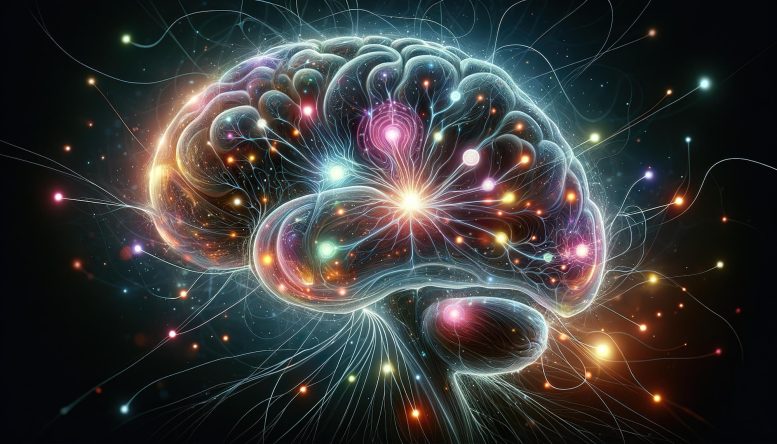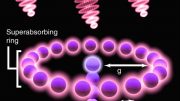
New research has revealed that memory formation in the brain is likely due to the formation of new connections between engram cells, emphasizing the importance of synaptic wiring changes in learning and memory storage.
What mechanism allows our brains to incorporate new information and form memories? Research led by Dr. Tomás Ryan from Trinity College Dublin reveals that learning involves the ongoing creation of new connections between specific engram cells across various brain regions.
We are always learning, either intentionally, incidentally, or accidentally, causing continuous changes in our brains. Our interactions with the world, each other, and media content lead to the acquisition of new information and the creation of memories.
The next time we walk down the street, meet our friends, or come across something that reminds us of the last podcast we listened to, we will quickly re-engage that memory information somewhere in our brains. But how do these experiences modify our neurons to allow us to form these new memories?
The Brain’s Dynamic Networks
Our brains are organs composed of dynamic networks of cells, always in a state of flux due to growing up, aging, degeneration, regeneration, everyday noise, and learning. The challenge for scientists is to identify the “difference that makes a difference” for forming a memory – the change in a brain that stores a memory is referred to as an ‘engram’, which retains information for later use.
This newly published study aimed to understand how information may be stored as engrams in the brain.
Dr Clara Ortega-de San Luis, Postdoctoral Research Fellow in the Ryan Lab and lead author of the article published in the leading international journal, Current Biology, said:
“Memory engram cells are groups of brain cells that, activated by specific experiences, change themselves to incorporate and thereby hold information in our brain. Reactivation of these ‘building blocks’ of memories triggers the recall of the specific experiences associated with them. The question is, how do engrams store meaningful information about the world?”
To identify and study the changes that engrams undergo that allow us to encode a memory, the team of researchers studied a form of learning in which two experiences that are similar to each other become linked by the nature of their content.
The researchers used a paradigm in which animals learned to identify different contexts and form associations between them. By using genetic techniques the team crucially labeled two different populations of engram cells in the brain for two discrete memories and then monitored how learning manifested in the formation of new connections between those engram cells.
Findings and Implications of the Research
Then using optogenetics, which allows brain cell activity to be controlled with light, they further demonstrated how these newly formed connections were required for the learning to occur. In doing so, they identified a molecular mechanism mediated by a specific protein located in the synapse that is involved in regulating the connectivity between engram cells.
This study provides direct evidence for changes in synaptic wiring connectivity between engram cells to be considered as a likely mechanism for memory storage in the brain.
Commenting on the study, Dr Ryan, Associate Professor in Trinity’s School of Biochemistry and Immunology, Trinity Biomedical Sciences Institute, and the Trinity College Institute of Neuroscience, said:
“Understanding the cellular mechanisms that allow learning to occur helps us to comprehend not only how we form new memories or modify those pre-existent ones, but also advance our knowledge towards disentangling how the brain works and the mechanisms needed for it to process thoughts and information.
“In 21st-century neuroscience, many of us like to think memories are being stored in engram cells, or their sub-components. This study argues that rather than looking for information within or at cells, we should search for information between cells, and that learning may work by altering the wiring diagram of the brain – less like a computer and more like a developing sculpture.
“In other words, the engram is not in the cell; the cell is in the engram.”
Reference: “Engram cell connectivity as a mechanism for information encoding and memory function” by Clara Ortega-de San Luis, Maurizio Pezzoli, Esteban Urrieta and Tomás J. Ryan, 21 November 2023, Current Biology.
DOI: 10.1016/j.cub.2023.10.074
The study was funded by the Irish Research Council, the US National Institute of Health, the European Research Council, and Science Foundation Ireland.









It’s so hard to believe that with so many scientists in countries across the world studying, over decades, how memories might be stored, that we still don’t know the answer to this!
Get to work!
I was thinking that way ha ha, sights,sounds,touch teaches our brain repeating a sense of imagination corresponding with word tools for action, then to movement.
some thinking, The best that we can see in my estimation is only one quarter of the universe with all the maps invented most are starting to look conical shaped that fit a initialization point in one direction not how the shape expands in more than one direction like a sphere expansion. the expansion acts only on it’s own allowance of tension that matter and space has hold of.